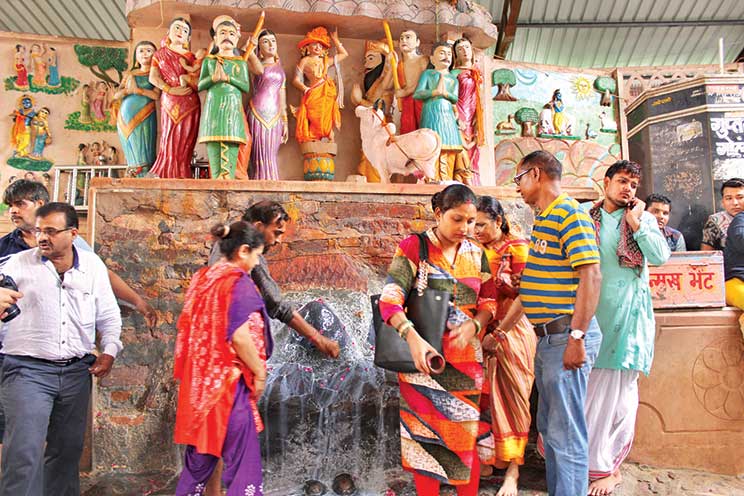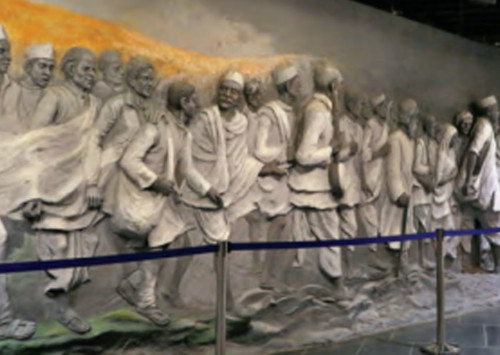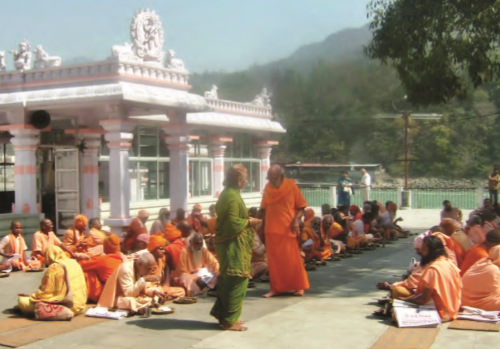Spirituality in North-East India
India & You
September-October 2018

The north-eastern region has various ancient traditions of spiritualism that are followed by the indigenous people and are known as animism, syncretism, or ancestor worshipping – they believe in cosmic oneness where everything is considered to be one.
While India may be known for its affinity to spirituality and religious practices and festivals, not many know that the north-eastern part of India is also a rich treasure trove of religious and spiritual practices that have been an important part of its culture for a long time. It doesn’t matter what religion you follow, the land of seven sisters has something for all, even for those who worship nature. The region is home to over 200 tribes and each tribal community follow their own culture and traditions. They speak different languages, have different religious practices, and wear clothes with distinct patterns.
A significant aspect of the north-east is that there is absence of a rigid caste system. Majority of the people in Mizoram, Meghalaya and Nagaland are Christians and there are many people in Arunachal Pradesh who still practice the traditional tribal religion. The Munda, Khamba, Khamti and Singpho people are mostly Buddhist. Tribal people here for centuries have lived in isolation and still prefer to do so. They mainly believe in cosmic oneness, where all things are seen to fundamentally share the same nature and same interaction with each other – rocks and forest trees, beasts and serpents, the living, the dead and first ancestors are all considered to be one.
Animism, syncretism and ancestor worshipping are some of the methods practiced. Animistic faith has been followed for centuries by different tribes, usually containing a belief in rebirth and reincarnation either as human or an animal, tree or a star. They believe that the spirits of place are either actual soul of the land or a soul that has come to reside in a hill, stream or grove as its guardian and benefactor.
Also Read – North-East India’s Natural Treasure: Meghalaya.
In the less explored terrains of north-east India.
Syncretism refers to the combination and blending of elements from different cultural and religious traditions. Religious and cultural syncretism is a worldwide phenomenon arising out of culture contact. The interrelated aspects of this phenomenon are culture change, reinterpretation, assimilation, etc. Such syncretism is also discernible in the northeast in general and Assam in particular. According to scholars, the region has seen acculturation among different religions like Islam, Sikhism and Christianity, after people from different backgrounds started coming into the state.

Worshipping the spirits
Another aspect of religious practices in the north-eastern region is clearly visible in Nagaland. There is a belief among the Naga people that there are different types of spirits — sky spirit and earth spirit. Then there are also the house spirits, field spirits and jungle spirits and depending on their inherent nature, spirits are good or bad. The Nagas also believe that spirits can influence the nature or personality of a person and each place is associated with a spirit. They believe that if there is a place there will be a spirit of the place that is supposed to be feared and propitiated. According to A Nshoga, a Naga research scholar, “The traditional Naga religion or tribal belief is a multifaceted religion with the combination of theism, animism, supernaturalism, superstition, shamanism and lycanthropism.”
R Sinha who has written about religion in the north-east India said that the religion, as discovered in the north-eastern cultural region is different from what it is in other parts of tribal India. They have some elements of religion in common, such as naturism or animism propelling a belief in the hierarchy of functional gods, deities and spirit reigning over them in a kind of kingdom and in a soul-substance hovering around their life. They have a basic philosophy of religion that binds them all and invokes their faith in the supernatural.
Ancestor worshipping is a religious form found in some parts of north-east, where peope believe that spirits of deceased ancestors are immortal and can influence events in the lives of the living. The natives follow culturally defined ceremonies and rituals to honour a family’s ancestors. They believe that the spirits of the ancestors will protect them even when they are gone. This practice strengthens the bond between the living and the dead, and also maintains the continuity of life. There are sixteen tribes in north east India who follow animism and ancestor worshipping.
Then there is the homogenous natural region of hills, valleys, plains and other geographical features where all aspects of life are permeated by community religion. For them, to be truly human is to belong to the whole community, including the ancestors and creation. Everyone actively participates in the beliefs, ceremonies, and festivals of the community.
TEMPLES, MONASTERIES, MOSQUES AND CHURCHES IN THE NORTH-EAST
The religious demography of the north-eastern region is diverse. From temples to monasteries, and churches to mosques, this region is a spiritual abode for travellers. The region of the seven sisters is known to be a holy land wherein every corner one can find beautiful shrines of different religion and faith.
Assam is home to numerous temples and places of worship. From being home to four Shakti Peethas, a tourist will also find number of churches, monasteries and mosques that serve as places of religious worship for people of all faiths. Kamakhya Devi Temple, situated in Assam is one of the most famous Hindu temples in north-east India. The state also adorns other famous temples like Bhuvaneswari Temple, Billeswar Temple, Asvakranta Temple, etc. The Akashganga Temple dedicated to Goddess Durga in Arunachal Pradesh is another popular Hindu pilgrimage site in north eastern region and is visited by hordes of devotees and tourists every year. The temple showcases a classical Odisha style of architecture.
The Unakoti Hill Temple in Tripura is considered to be among the seven wonders of India. Tourists and pilgrims from all over the world visit this place and admire the huge and fabulous rock-cut images of Hindu pantheons carved on these hills that date back to period between 7th and 9th centuries.
Tawang monastery is the largest Buddhist monastery in India. One of the highly visited places in Arunachal Pradesh, the monastery houses some of the most valuable Buddhist scriptures at its library. The Buddha Temple in Shillong is yet another Buddha shrine in the region where a huge number of devotees gather to offer prayers.
There are many famous mosques in the north-eastern states that depict stories of secularism, devotion and that uphold the value of Islam. The Madina mosque in Meghalaya is the rare architectural marvel in India as it has a striking and glittering structure of glass. The mosque is famous amongst tourists for being the only green mosque after the blue mosque of Istanbul. Another mosque that is famous is the Panbari Mosque in Assam, which is considered to be the oldest mosque in the north-east. Other famous mosques in the region are Jama mosque and Hatta mosque in Imphal, Manipur.
The region is also popular for many historic and iconic churches. The Sumi Baptist Church located in Nagaland is the largest Baptist church in Asia. The auditorium in the church has a seating capacity of 8,500 people and is located 1,864 metres above sea level.
Also Read – The changing face of airports in north-east India.
Sustainable Fashion from North-East India.
Another famous church is All Saints Church in Meghalaya that was built during the British era. The Colonial architecture of this church is a treat to the eyes. A few other famous churches in the region include Christ Church in Guwahati and Mary Help of Christians Cathedral in Shillong.












